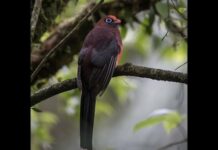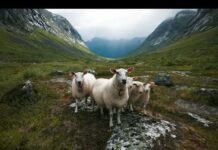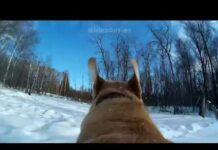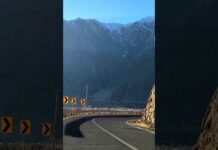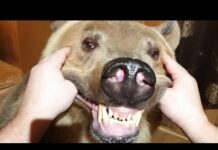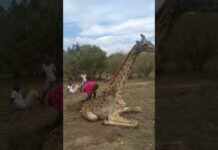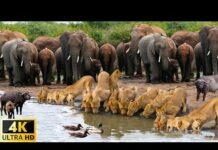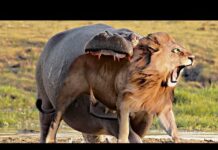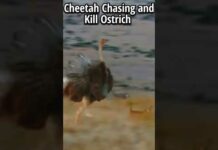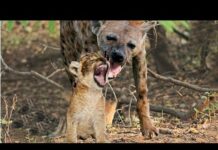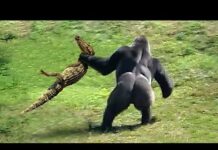Commemorating the bicentennial year, this program tells the story of man’s first settlement on our Eastern Coast and the animals he saw.
Catch more remastered episodes of Mutual of Omaha’s Wild Kingdom on our YouTube channel and WildKingdom.com here: https://bit.ly/3hZxVuJ
Mutual of Omaha’s Wild Kingdom is back in action with our new series, Mutual of Omaha’s Wild Kingdom Protecting the Wild. We traveled around the U.S. to highlight some amazing conservation success stories happening in our own backyards and we cannot wait to share them with you. Stream these new episodes free on our website here: https://bit.ly/3VxyDxd
And check us out on our other platforms for more animal facts, wildlife conservation success stories, original series nostalgia and more!
WildKingdom.com
Facebook: https://www.facebook.com/wildkingdomtv
Instagram: https://www.instagram.com/wildkingdomtv/
Twitter: https://twitter.com/WildKingdom
TikTok: @wildkingdomtv
#wildkingdom #nature #animalvideos
Welcome to Mutual of Omaha's Wild Kingdom I'm Peter Gross co-host of the original Wild Kingdom with Marlon Perkins and Jim Fowler for more than 50 years while Kingdom explored wildlife in our natural world tonight's episode and many others focus on the Timeless value of wildlife conservation Wild Kingdom played a critical role in changing.
Public attitudes about the importance of animals for the health of our planet in our own quality of life we challenge viewers to learn about animals and get involved in conservation in their local communities that call to action resulted in more visits to local zoos nature preserves and even observing animals in their natural habitats and that.
Connection with animals benefits all of us in the Wild Kingdom so sit back relax and enjoy Mutual of Omaha's Wild Kingdom right here on RFD TV foreign Mutual of Omaha's Wild Kingdom is presented by Mutual of Omaha people you can count on.
Welcome to Mutual of Omaha's Wild Kingdom despite the encroachment of van and his developments this spot retains much of the beauty it held when this nation was born 200 years ago or even 400 years ago when Europeans first settled along America's East Coast a short distance from here in this.
Direction is where a fort was established by the Spanish after they landed here in 1565. this huge Stone Fort surrounded by a great moat was built beginning in 1672 near the site of the Spanish Landing the fort was called Castillo de San Marcos.
And the settlement there was named Saint Augustine destined to become the oldest city in the United States it was a lush subtropical land mysterious and in some ways terrifying yet intriguing with its promise of fortunate Empire having landed on these Shores they found a vast continent awaiting exploration and this tiny.
Toehold where they built their Fort was the beginning here on the huge Peninsula which Ponce de Leon had earlier named Florida they soon began penetrating inward lured by their dreams of riches and territorial claimed in this land of swamps and Woodlands marshes and beaches and Mangrove coastlines they found an.
Interior rich in wildlife one fairly familiar animal quickly encountered in the Upland swamps was the black bear the black bear was a source of good meat it was dangerous when angered so they generally left it alone in its floor of.
The range extending Southward into the Everglades that Great Sea of Grass dotted by hammocks of low trees this was home for another large mammal the most widespread predator in the Western Hemisphere the cougar it avoided human contact but still the Spaniards slew it in Great numbers large flocks of beautiful white egrets.
Congregated in their rookeries among the Mongolian mangrove trees near coastal areas because these handsome birds and beautiful plumes during their breeding season they were destined for near destruction the Spaniards also saw the graceful osprey.
In the coastal Waters they watched the large brown Pelicans diving after fish near the surface one of the strangest creatures was the huge totally inoffensive and rather formless manatee or Sea Cow All Too Soon the Spaniards found the vanity an excellent source of meat and hunted them extensively.
But the animal they found which was most representative of this subtropical portion of the new world as well as most to be feared was a powerful multi-toothed reptile of rivers and swamps foreign s call him the lizard in their tongue El legato.
This name eventually evolved to become alligator ultimately the ones and killing of the alligators by the Spaniards in the Florida swamplands established a pattern of wildlife destructions destined to become white man's terrible trademark in this.
Great land this destruction was a pattern the English continued when under Captain John Smith they established Jamestown on the shores of the James River just Upstream from Chesapeake Bay they named the land Virginia after Elizabeth the Virgin Queen here too Wildlife was abundant.
In addition to cougars and bears just like the Spaniards encountered they found the wolf in large numbers then still a long way from being pushed into the Canadian Wilds foxes roamed here also both the gray fox of the woodlands and the red fox of.
Generally more Open Country and considerably less intimidated by man foreign was the handsome bald eagle whose appearance and fierceness whose strength and free spirit would one day make it become the symbol of the nation to be born here.
Jamestown was settled in 1609 just 11 years later farther north the third of the permanent settlements was founded it was now 1620 when the pilgrims landed in what they called New England and established a colony named Plymouth in what later became Massachusetts this Northeastern portion of the land was abundant with bird and mammal.
Species of the animals were of value to the new settlers the whitetail deer became venison for the pioneers in a fervor of Thanksgiving for this land's Bounty the pilgrims raised the wild turkey to the exalted spot it is.
Occupied since once this bird was almost accepted as our national symbol instead of the bald eagle how distinctively drumming on Lords Hunters ever deeper into a Wilderness of forests and lakes the Wilderness populated with the.
Largest of the deer family the moose and it became another natural meat source for the pioneers the Elks fitted into that same category widespread in the east then it was a magnificent animal enthusiastically hunted and swiftly eliminated here the Bold Bobcat was among the most common Predators roaming these same.
Woods and Fields foreign filled the skies sharing the air with one of the most strikingly beautiful Falcons of eastern North America the Peregrine or American duck Hawk it's Grace and flight and incredible speed were unmatched by anything else in the air.
Cottontail rabbits were everywhere possum families were a familiar sight and Nimble squirrels filled the forest with their chattering raccoon one of Nature's Most adaptable mammals learned quickly to fear manned while living very close to him there was at first in this beautiful.
Land an incredible number of animals but Eastern America was gradually being settled and Wildlife was sharply diminishing nobody was really concerned and it seemed they would never be foreign this is the headwaters of the.
Mississippi River that great natural boundary which bisects our country the colonization of the continent by Europeans had been going on for nearly 200 years and yet the vast country Westward of this River was still largely unknown east of the Mississippi River the Americans had won their Revolution and.
The 13 colonies had become 13 states but Westward of the Big River was a great relatively unknown territory owned by the French and called by them Louisiana the purchase of this sprawling territory was the first great land acquisition of the United States soon afterward the new government fitted.
Out an expedition under William Clark and Meriwether Lewis and they were ordered to explore and report on that wild territory to the westward of this river that expedition followed the Missouri and Yellowstone rivers to their headwaters it crossed the Continental Divide.
Following the Snake River and then the Columbia to its mouth on the Pacific it passed through a magnificent new Empire at last unlocked for settlement it was the first of many Expeditions opening the Great West of this continent a new territory even more teeming with Wildlife than the East had been foreign it was a land where Wildlife was too.
Plentiful it seemed ever to disappear here there were sites to set the pulse racing such as the American Bison also called buffalo the Bison filled the Great Plains an unbelievable herds numbering millions of individual animals mounds of Earth indicated tunnel networks covering scores of miles these were called prairie dog towns.
After the large rodents which constructed them Fierce Badgers preyed on them catching them on the surface or digging them out with powerful claws while the less energetic coyote tried to outsmart the rodents and if they escaped it was never really any great loss to the.
Predator since the same area was practically overrun by large jackrabbits which were simple to catch the prairie chicken settlers quickly Learned was large and fine to eat and The Delectable Sage Grouse was easy to kill Wildlife was everywhere.
Herds of bighorn sheep raised contentedly on the grasses of the highest slopes above Timberline mountain goats climbed with great skill on sheer Rock faces now essentially gone from the East still were commonplace here the beautiful but Melancholy voices of.
The world's largest waterfowl the trumpeter swan sounded frequently in the crisp Mountain Air grizzly bears were here too and it's virtually everywhere else on the continent the Cougars more than for any other reason at these Early Times American wildlife was put in.
Jeopardy because of the fur Bears such as the otter these animals were most responsible for initially bringing the white man deep into the Wilderness because their Furs represented Fortune otters weren't practically every river along with their close relatives The Mink.
Less aquatic but still found most commonly near the streams richly furred Pine Martens inhabited forests but to their own detriment they were much too simple to try even wolves had fur valuable enough to justify their being trapped but the animal most responsible for.
Opening America's interior was the beaver with fur so valuable that for a Time whole Empires revolved on the trade in its pelts The continent's Wildlife Resources were being excessively reaped it simply couldn't last as the settlers moved across the.
Continent to this country's far Northwestern Coast the excessive destruction of wildlife continued here on this wild Northwestern Coastline marine mammals were now added to the list of those being wantonly slaughtered this included sea lions such as these.
Great numbers of them inhabited this Rocky Coast elephant seals which shared this same habitat also became victims to man's encroaches still settlement was relatively slow until suddenly gold was discovered at Sutter's Mill in a land called California and with that a tremendous.
Surge of humanity poured into the West as the settlers came trekking over prairies and deserts and mountains they continued that pattern established nearly three centuries earlier by the Spanish in Florida the pattern of killing Wildlife with Reckless abandoned were ever encountered bison were slaughtered by the hundreds.
Of thousands millions these herds were seemingly endless and the animals were occasionally killed for their meat sometimes for their fur frequently for the tongue alone as a table delicacy far too often they were casually destroyed just for the fun of shooting something.
Some people even labeled it sport bison hides were not particularly valuable but there was great value in The Furs of the seals which inhabited the country's entire Pacific Coastline the same was true of the sea otters which were taken in such numbers for the rich fur that Extinction became a real threat thank you.
the grizzly bear of the Rockies was disappearing as were the pronghorn antelope of the foothills of those mountains farther south in the more arid mountains of the Southwest Jaguar were being decimated even the wild pig of the desert the.
Peckery once extremely populous was now becoming scarce so were the raccoon-like kawadi Mundy of that same Terrain destruction of individual individual animals was the destruction of deliberate fires were those caused through carelessness by the settlers.
Destroyed Untold millions of Acres of grasslands and the wildlife upon them the same thing was occurring in the great forests one way or another the entire entire surface of the country was being with startling sudden as there was no.
Longer a plentiful supply of wildlife in America animals once numerous beyond belief were now extinct or well on the road to annihilation it was American wildlife's most desperate time and it was at this juncture that a man of both power and vision came along and took steps to.
Rectify wherever possible the damage that had been done our Wildlife Heritage had very nearly been squandered but pointed out there were many people by this time who recognized the plight of American wildlife but few who had the power to do.
Anything about it the one who did was one of the four Great presidents whose images have been carved into the face of Mount Rushmore here in South Dakota they were men of vision and strength George Washington Thomas Jefferson Theodore Roosevelt.
Abraham Lincoln it was Theodore Roosevelt who took the steps necessary to rescue America's Wildlife heritage even though Roosevelt recognized the Dire Straits American wildlife was in and took strong steps to make this trend reverse itself for some species it was already too late for they were too low.
In numbers to recover despite the new protection so they became extinct the classic example among these is the passenger pigeon it was once by far the most abundant bird in all of North America perhaps in all of the world individual flocks in Flight stretched from Louisiana to the Ohio River Valley and there were many flocks yet the.
Passenger pigeon became extinct in 1914. but there are bright spots as well because of the multitude of programs of land acquisition and Wildlife protection inaugurated or inspired by Theodore Roosevelt other species which would have become extinct were saved in last minute rescues the beautiful whooping crane once.
Diminished to a population of only 14 Birds is making a gradual comeback though still endangered it is no longer anywhere near so close to extinction as them the sea otter has also been saved and is now well on the road to recovery the wildlife Heritage has not been lost unfortunately parts of it were lost but.
Much has been preserved through sound conservation laws and the acquisition of natural habitat this has been done through increased public awareness of the need and for many years telling the conservation story has been the very real concern of Mutual of Omaha and his board chairman Mr B.J Scott who was born just a few.
Miles from this great Monument well Marlon we at Mutual of Omaha are very happy to have helped the cause of conservation we plan to continue this in years to come for we are keenly aware of the value to all Americans of our Wildlife heritage the heritage is still ours ours do.
Cherish and use wisely and hours to pass on in a healthy state to those who will follow us it is now and always will be our own responsibility to preserve and protect our heritage of the Wild Kingdom as presented Mutual of Omaha's Wild Kingdom foreign.
Mutual of Omaha helping people find Medicare solutions for over 50 years to learn more about plan options or how to protect your kingdom contact us today Mutual of Omaha protect your kingdom
We are excited to present to you the captivating video titled “America’s Wildlife Heritage | Mutual of Omaha’s Wild Kingdom”. Get ready to embark on a journey of enjoyment, smiles, and laughter as you watch this delightful creation. “America’s Wildlife Heritage | Mutual of Omaha’s Wild Kingdom” is a perfect blend of entertainment and amusement, carefully crafted to bring joy to your day. From the moment you press play, you’ll be greeted with a cascade of lighthearted moments, heartwarming scenes, and perhaps even a few surprises that will tickle your funny bone.
Whether you’re in need of a quick pick-me-up or simply looking for some light-hearted entertainment, “America’s Wildlife Heritage | Mutual of Omaha’s Wild Kingdom” has you covered. The video promises to deliver a collection of moments that are bound to leave you grinning from ear to ear. With its engaging content and skillful presentation, “America’s Wildlife Heritage | Mutual of Omaha’s Wild Kingdom” is more than just a video – it’s an experience designed to brighten your mood and spread positivity.
The creators of “America’s Wildlife Heritage | Mutual of Omaha’s Wild Kingdom” have poured their creativity and dedication into crafting a visual treat that resonates with audiences of all ages. Through expert storytelling, impeccable timing, and an array of engaging content, “America’s Wildlife Heritage | Mutual of Omaha’s Wild Kingdom” promises to be an unforgettable journey that lingers in your memory long after the video concludes.
So sit back, relax, and prepare to be entertained as you dive into the world of “America’s Wildlife Heritage | Mutual of Omaha’s Wild Kingdom”. It’s a delightful video that aims to bring a dose of happiness to your day, leaving you with a lasting smile and a heart full of laughter.
This video was uploaded in youtube and has recieved 3495 views so far. This is a great achievement and laso it has received 93 likes and .
Data bout the video:
Rating: ,
Video dimensions: 2d,
Video definition: hd,
Video duration: 00:24:34,
Video favourite count: 0
Video comment count: 14


